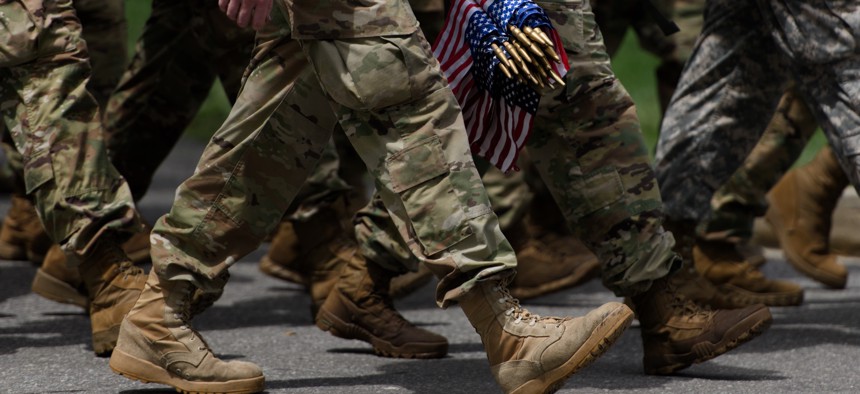
Getty Images
Trump-era Efforts to Boost Military Readiness Produced Mixed Results, GAO Finds
New report adds fuel to debate over how to conceive of and measure readiness.
The Defense Department is still struggling with readiness despite several years of budget increases meant to fix things, a recent report shows.
“From FY 2017 through FY 2019, U.S. military readiness increased in the ground domain and declined in the sea domain, while readiness ratings in the space, air, and cyber domains were mixed,” said the report, released Apr. 7 by the Government Accountability Office.
The report arrived just weeks after opeds by two service chiefs raised questions about how the military conceives of readiness.
The 2019 National Defense Authorization Act requires GAO to compare military readiness metrics in the current fiscal year to those of 2017 — a year when the military readiness “crisis” was blamed for the deaths of 17 sailors.
The 2019 reporting mandate is part of several Trump-era efforts to shore up readiness, including a July 2017 memo from Defense Secretary James Mattis and budget increases. Some have argued that the efforts succeeded, but the most recent GAO report shows measured readiness increases in only one of five warfare domains.
GAO used data for “selected mission areas” and “force elements” to rate readiness in each of the five domains and explain why readiness is failing.
“For example,” the report said, “within the sea domain, the Navy identified limited maintenance capacity at private and public shipyards as the primary challenge for recovering ship and submarine readiness.”
In its new report, GAO said the Defense Department has implemented some but not all of the recommendations from its previous readiness reports. The report’s authors note that the Defense Department has chosen not to establish its own system of metrics to measure readiness by domain, saying that its Readiness Recovery Framework provided all the metrics it needed.
“GAO continues to believe our recommendation is valid,” the most recent report said.
So Trump’s years of budget bumps may not have quite hit the mark on improving readiness — and now “readiness” is a moving target.
“Redefine readiness or lose,” two of the service chiefs wrote in op-eds published in the Washington Post and War on the Rocks. In March, Air Force Chief of Staff Charles Brown Jr. and Marine Corps Commandant David Berger wrote that “the joint force requires a holistic, rigorous, and analytical framework to assess readiness properly.” Readiness and “availability” have become “synonymous,” the leaders wrote, adding that DoD generally considers itself sufficiently ready if it has people and equipment available for rapid deployment.
Brown and Berger argue that this is a recipe for declining global competitiveness.
“We cannot let our focus on near-term availability consume the resources necessary to generate truly relevant future readiness through adaptive modernization,” they wrote. “We have a unique, but limited, window of opportunity. The time to act is now.”
Biden’s first proposed defense budget will be around $715 billion — higher than generally expected but still lower than the $722 billion proposal left behind by the Trump administration.
The budget increase will go towards a pay raise for troops and DoD civilians, an administration official told reporters Friday, as well as investments on “non-defense” rather than legacy systems that can no longer win modern wars. But redirecting DoD funds for modern readiness is a “two-step process,” Berger and Brown wrote.
“We cannot simply cut resources for near-term readiness or legacy capacity in the name of savings. Rather, we must put those savings into transformative modernization as part of our larger future force design model.”
